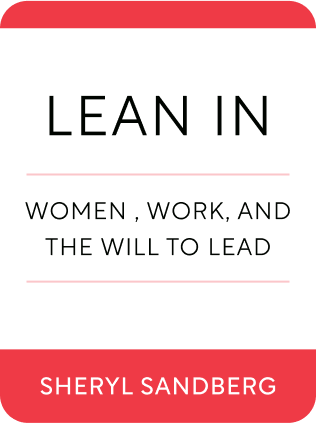

This article is an excerpt from the Shortform book guide to "Lean In" by Sheryl Sandberg. Shortform has the world's best summaries and analyses of books you should be reading.
Like this article? Sign up for a free trial here .
Why are there so few women in leadership roles? Is it a case of women not being ambitious enough? Or there something else behind it?
According to Sheryl Sandberg, who is known for her efforts to empower working women, the biggest reason there are fewer women in leadership roles is because of the “leadership ambition gap.” As the name suggests, the leadership ambition gap is the disparity in aspiration to occupy leadership positions between genders.
Keep reading to learn about the leadership ambition gap and how it contributes to fewer women aspiring to leadership roles.
The “Leadership Ambition Gap”
Perhaps the biggest reason there aren’t many women in leadership roles is what Sandberg terms the “leadership ambition gap.” Data shows fewer women than men aspire to senior-level jobs:
- A McKinsey survey showed 36 percent of male employees wanted to reach senior leadership positions, compared to 18 percent of women.
- When jobs are described as “powerful” and “challenging,” they appeal more to men.
- More men use the word “ambitious” to describe themselves than women.
This lack of leadership ambition in women starts before they enter the workforce. A survey of college students showed that “becoming a manager within 3 years of graduation” was less of a career priority for women than men. (While strides are being made a bit with millennial women, there’s still a long way to go.)
The result: more men aim for leadership roles and more men get leadership roles. This pattern starts in childhood and grows stronger. Data shows that in middle school, more boys aspire to leadership roles when they grow up. At the top 50 colleges, more than two thirds of student government presidents are male.
(Some disagree with the idea of inherent lesser ambition in women, saying women are simply more enlightened with more meaningful goals than being a corporate executive. Sandberg doesn’t completely disagree and doesn’t dispute that women may have more innate nurturing tendencies. But, Sandberg, argues, a desire for leadership is a culturally enforced trait, and our culture sends the leadership message to boys — and not girls — early on.)
There are several factors behind the leadership ambition gap:
- Ambition is a “dirty word” for women. Men are applauded for being ambitious, but hard-charging women violate societal conventions. Hearing “she’s so ambitious” is not a compliment.
- Pressure to get married and start families. Women are still under enormous pressure to get married, conditioned to prioritize marriage over career. Sandberg’s parents urged her to “marry young before all the good ones are taken.” Sandberg even rejected an international fellowship after college because it wasn’t good husband-hunting ground.
- The workplace is unfriendly to working parents. Once they become mothers, women know things will grow even more difficult at work. Without family-friendly policies, conflicts arise at work when you try to be a good employee and a good parent. (The good news: data shows kids, parents and marriages can flourish with two full-time working parents. More on this in later chapters.)
But perhaps the two biggest factors are:
- Gender stereotypes limit girls from an early age.
- Fear of failing keeps women from pushing forward.
Gender Stereotypes
Gender stereotypes imposed from birth encourage boys to see themselves as leaders and girls to see themselves as nurturers. This stereotype extends into adulthood, affecting how women behave in their careers.
Boys and girls are treated differently even as babies. Data shows mothers nurture girls more, offering more help and comfort; meanwhile, boys are encouraged to play by themselves. Moms overestimate baby boys’ crawling ability while underestimating that of girls.
Society soon chimes in to reinforce the stereotype. Sandberg recounts seeing Gymboree baby onesies that read, “Pretty Like Mommy,” and “Smart Like Daddy.” A viral video of a 4-year-old girl in a toy store drives home the pressure: Upset by the sea of pink she’s supposed to like in the girls’ toy section, she laments, “Some girls like superheroes.”
As they grow, girls are actively discouraged from leadership.They are rewarded for being pretty and encouraged to be nurturing. If a girl is assertive, she’s labeled “bossy.” Sandberg recalls her childhood as a “bossy” girl, directing other kids’ play and organizing neighborhood shows. These behaviors would have been seen as leadership traits, not bossiness, in a boy.
School reinforces the stereotypes. Data shows teachers interact more with boys (calling on them, asking questions) than girls. Boys are more likely to shout out answers without raising their hand — and get listened to. In contrast, if a girl shouts out an answer without raising her hand, she is more likely to be scolded.
The “stereotype threat” complicates the fight against stereotypes. Social scientists say when a group is made aware of a negative stereotype, they are more likely to perform according to that stereotype. For example, if girls are aware of the stereotype that boys are better at math or science, when they are reminded of their gender before a test (even something as simple as checking the box F for female), they perform worse. This phenomenon discourages girls from entering tech fields.
Stereotypes in the media help reinforce a negative image of women in leadership. Working women are portrayed as consumed by career with no personal life, like Sigourney Weaver in Working Girl or Sandra Bullock in The Proposal.
Media stereotypes have real-world results: a survey showed that when there is a woman in a senior leadership role in a company, female subordinates say they “don’t want to be like her.”
When women accept the stereotype of a woman in management as negative, they are less likely to pursue opportunities for advancement.
Fear Is Holding Women Back
While men assume they can have successful work and family lives, women assume that doing both will be difficult to impossible. Women are afraid of the challenges they’ll face with a demanding job and family commitments. They’re afraid of not being liked, making wrong choices, drawing negative attention, and failing. They fear being a bad wife and mother.
Without fear, Sandberg asserts, doors open for women. They can pursue work, family, or both. They can take risks. Sandberg urges women to fight their fears and pursue leadership boldly, without caring what other people think and what stereotypes say. A sign in the Facebook office said: “What would you do if you weren’t afraid?” For Sandberg, this advice led to her writing Lean In, something that initially scared her.
Keeping the Discussion Going
True equality can be achieved only when more women are in leadership positions. To get more women in these roles, men and women alike have to understand the biases and stereotypes that have been perpetuating the status quo.
It’s time for everyone to cheer on girls who want to sit at the table and lean in to their careers. Men, too, need to be supported and respected for contributing within the home and supporting their partners.
Women Supporting Women
For gender equality to prevail, women have to stop sabotaging other women. When women turn on other women, we all lose. Women need to support and stick up for women in order for true equality to prosper.
For example, when Marissa Mayer became CEO of Yahoo and announced she’d be taking just a few weeks maternity leave, which she would work through, she was roundly criticized by women for setting unreasonable expectations. Her individual choice was not respected.
The “Queen Bee” phenomenon still exists. Women in power often discourage other women from gaining power, as if there’s only so much to go around. This attitude was born of self-preservation in a male-dominated workforce in the past, but still lingers. Data shows that once a woman achieves success, her capacity to see gender discrimination is actually reduced. Worse, when women view other women negatively, that viewpoint is respected because a lack of bias is assumed.
The “mommy wars,” which pit stay-at-home moms against working moms, are hurting all women. Each group judges the other because they have mixed feelings about their choices and hold that discomfort against women who remind them of the path not taken. Guilt and insecurity make us second-guess ourselves and resent each other, and this has to end.
Opportunities for Everyone
There’s evidence that attitudes among women and men are changing. A survey found that high-level women are starting to “pay it forward” by supporting the careers of junior women.
When women help one another, we help ourselves. Acting as a coalition makes everyone stronger.
This coalition has to include men. Men need to take an active role in encouraging talented women in the workforce and advocate for their career advancement. Men also need to commit to changing the leadership ratios in organizations.
We are working toward a world where the old social norms don’t exist and both women and men have more choices based on their passions, talents and interests, not their gender.
Workplace change is our more immediate problem. There’s a lack of sick leave and vacation pay for working mothers. Maternity leave pay is not standard. Work standards are inflexible and unfair, penalizing working moms and dads. Families can go into debt or poverty as a consequence of these policies. These policies have to change.
Sandberg wrote Lean In to encourage women to dream big, power through obstacles, and reach their full potential. When more women lean in, we change the power structure of our world and expand opportunities for all. Having more women in power will lead to fairer treatment for all women.
In the future there won’t be female leaders and male leaders, there will simply be leaders.

———End of Preview———
Like what you just read? Read the rest of the world's best book summary and analysis of Sheryl Sandberg's "Lean In" at Shortform .
Here's what you'll find in our full Lean In summary :
- How professional, personal, and societal hurdles are holding women back
- Why you need to commit to your career with risks and ambition
- How your career is more like a jungle gym than a ladder






